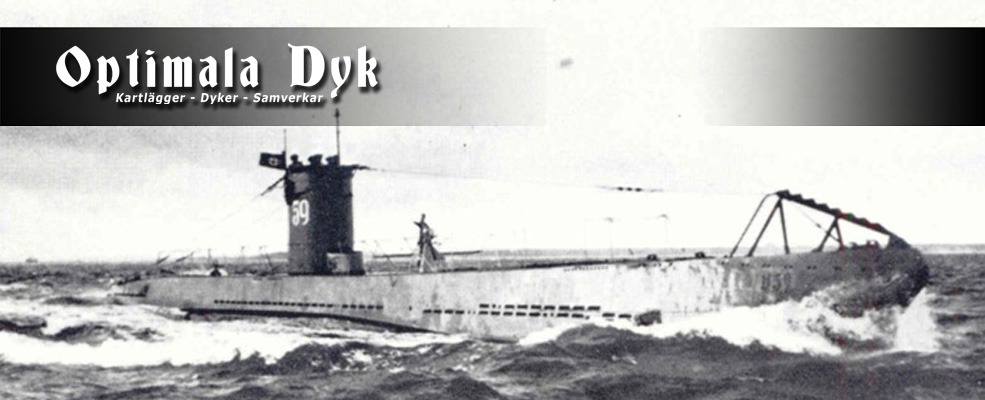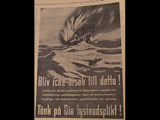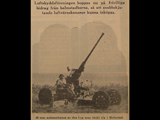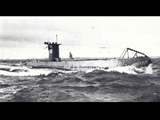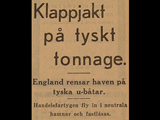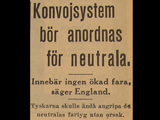War in the Kattegat 1939-1945.
A article in seven parts.
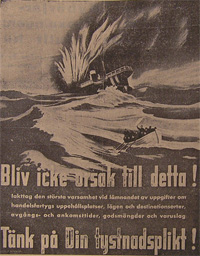
Part 1: 1939
The Kattegat is one of the bottlenecks for shipping in the world, which means that many ships pass here. At the bottom of the sea lye many ships, but they break down over time. Due to the salt water, iron is estimated to rust about 0.15 mm per year in the Kattegat, which means that the wrecks from the Second World War have about 20 years left before they collapse, like we have seen many of the ships that sank in the First World War have already done to a large extent.
During World War II, many ships sank along the Swedish west coast and many people perished and floated ashore along the coast. Sweden's neutrality has often been questioned as foreign forces on several occasions during the war were in Swedish neutral territory and Swedish tankers, on behalf of Germany, went with oil from Germany to Norway during the war. These ships were often in Lysekil for provisions and although there were many anti-Germans among the west coast residents, there were also many who were signed on the tankers that carried oil. These transports were of great importance to Germany in their warfare.
At the beginning of the war, Sweden was very cautious and conflicts with the Germans were avoided to get as favourable an outcome as possible after the war, which Germany was expected to win. However, the attitude changed during the latter part of the war when it became clear what the outcome of the war would be. During World War II, the Swedish Air Force shot down 20 aircraft, of which 11 were German and 8 allied. During the war, 305 foreign planes also made emergency landings in Sweden.
On March 28, Halmstad's air protection association called on people in the city to donate money to air defence gun, a piece with two 40 mm automatic cannons of the Bofors brand. 140 shots per minute. The chairman of the association, the mayor of Halmstad, announced that they hoped to raise SEK 130,000 to be able to buy modern air defence guns for Halmstad's defence. During the first day's collection, they received a total of SEK 64,500. It was a success. The mayor pointed out that without the grants, Halmstad would not have been able to create an air defence.
On August 24, the German submarines U-5, U-6, U-7, U-10, U-56, U-57 and U-59 left Kiel to patrol the Kattegat. Operations were carried out near Läsö and further south in the waters and at the entrance to the Baltic Sea to prevent and impede the passage of enemy submarines and ships. At Samsö, U-59 noticed a British submarine before returning to Kiel on 17 September.
On September 3, the Swedish government's decision on military preparedness came into force.
On September 7, it was announced from the British side that the attacks on the German submarines had been successful and that the Germans were being driven from the seas. The Germans were described as using all possible means to avoid detection such as camouflage of the ships and flight to neutral ports.
Between 26-39 September, the German destroyers Hans Lody, Friedrich Ihn and Erich Steinbrinck patrolled together with the torpedo boats Iltis, Wolf, Seeadler and Leopard from the 6 torpedo boat flotilla in the Kattegat and Skagerrak. A total of 45 ships were stopped and checked.
Between September 30 and October 6, the Germans continued the trade war in the Skagerrak and Kattegat. Among others, the destroyers Hermann Schoemann, Friedrich Ihn and Erich Steinbrinck and the torpedo boats Greif, Falke and Albatros participated. During this time, a total of 72 merchant ships were stopped and checked.
On 5 October, trade experts from various countries gathered in London to discuss export trade with England and Germany's threats to neutral shipping. It was considered important to introduce convoy systems to protect neutral ships. It was realized that the Germans would consider neutral ships protected by English convoys as legitimate quarry, but since the Germans had already captured or sunk several neutral ships, it was considered that neutral ships could just as well take advantage of convoys as they still did not go safe.
On November 15, some fishermen from the west coast met three German destroyers together with three submarines off the island Vinga. The fishermen also noted mines that were laid out.
